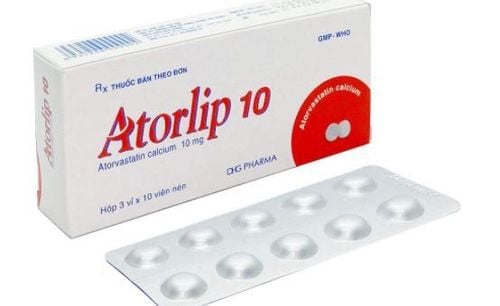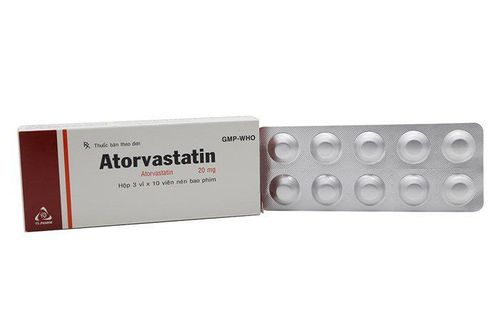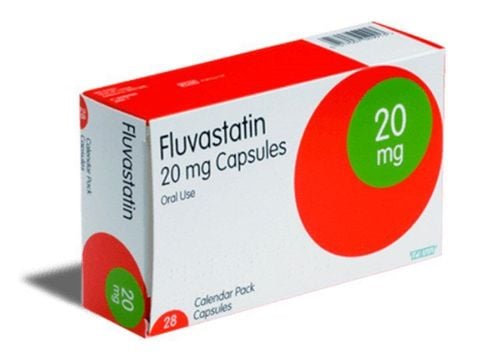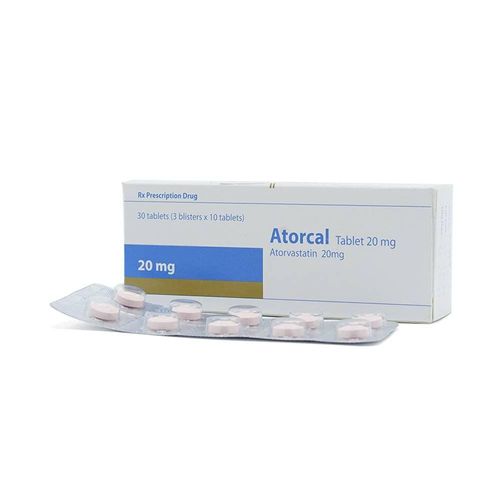This is an automatically translated article.
Glovitor is used to reduce total cholesterol, LDL-cholesterol, apolipoprotein B and triglycerides. Adhering to indications, the dose of Glovitor will help patients improve treatment effectiveness and avoid unwanted side effects.1. What is Glovitor?
Glovitor drug belongs to the group of cardiovascular drugs, made in the form of film-coated tablets, packing specifications: Box of 3 blisters, 10 blisters, 30 blisters x 10 tablets. The ingredient Atorvastatin (10mg) in Glovitor belongs to the group of HMG-CoA reductase inhibitors. Atorvastatin inhibits cholesterol production in the liver, slowing the progression and possibly even reversing coronary heart disease.
2. Indications for Glovitor
Glovitor is indicated in the following cases:
Reduce total cholesterol, LDL-cholesterol, apolipoprotein B and triglycerides; Increased HDL-cholesterol levels in patients with primary hypercholesterolemia; People with dyslipidemia but not responding adequately to diet; It is also indicated for the reduction of total cholesterol and LDL-cholesterol in patients with homozygous familial hypercholesterolemia.
3. Dosage, how to use Glovitor
How to take Glovitor:
Patients can take Glovitor at any time of the day. Dosage of Glovitor:
Treatment of hypercholesterolemia (non or heterozygous familial) and mixed dyslipidemia: The recommended starting dose of Glovitor is 10 to 20 mg once daily. For patients who need to reduce LDL cholesterol a lot, they can take a dose of 40mg once a day; Homozygous familial hypercholesterolemia: Glovitor dose 10-80mg/day. Concomitant use of the drug with other lipid-lowering measures; Combination therapy: Glovitor can be used in combination with Resin to increase the effectiveness of treatment; Dosage of Glovitor in patients with renal impairment: No dose adjustment is required. The dosage of Glovitor above is for reference only. The specific dose of Glovitor will depend on your condition and disease progression. To get the right dose of Glovitor, patients need to consult their doctor or pharmacist.
4. Contraindications to the use of Glovitor
Glovitor is contraindicated in the following cases:
People with hypersensitivity to any ingredient in Glovitor or HMG-CoA reductase inhibitors; Patients with advanced liver disease or persistent elevations of serum transaminases of unknown cause; Pregnant and lactating women should not use Glovitor.
5. Interactions with other drugs
Unwanted interactions may occur if Glovitor is used concurrently with the following drugs:
Anticoagulants and Indandione; Cyclosporine; Erythromycin ; Gemfibrozil; Immunosuppressive drugs; Niacin; Digoxin .
6. Side effects of Glovitor
During the course of taking Glovitor, the patient may experience the following side effects:
Constipation; Flatulence; Undigested; Stomachache; Nausea, vomiting; Headache. If you experience the above symptoms, the patient should stop using Glovitor and notify the doctor or pharmacist for appropriate treatment.
7. Notes when using Glovitor
Before treatment with Glovitor, it is necessary to exclude the cause of secondary dyslipidemia and measure the lipid indices; During treatment, if there is inflammation of the muscle, creatine kinase index or serum liver enzyme levels increase, it is necessary to reduce the dose or stop using Glovitor; Use Glovitor with caution in patients with liver dysfunction or heavy alcohol consumption; Patients need to have a reasonable diet before and during treatment with Glovitor. The article has provided information about the uses, dosage and precautions when using Glovitor. To ensure safety for your health and maximize the effectiveness of treatment, you need to take Glovitor exactly as directed by your doctor, do not increase or decrease the dose or give prescriptions to others to use.
Please dial HOTLINE for more information or register for an appointment HERE. Download MyVinmec app to make appointments faster and to manage your bookings easily.













